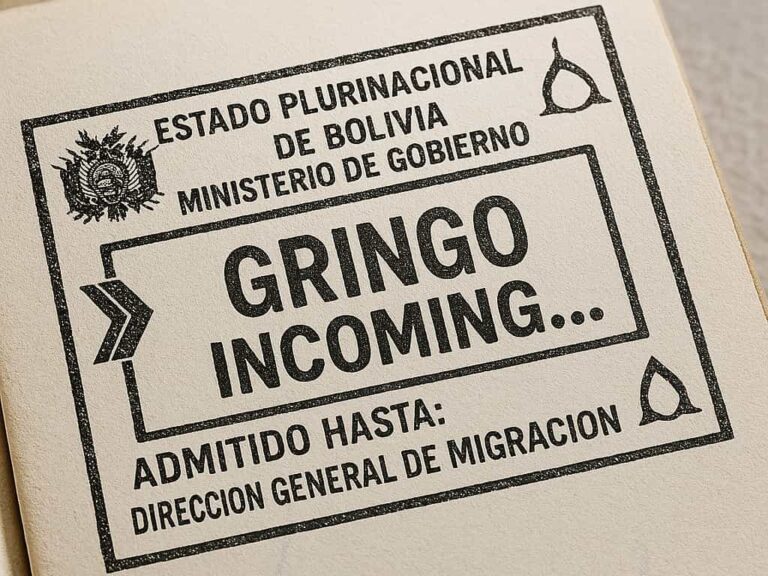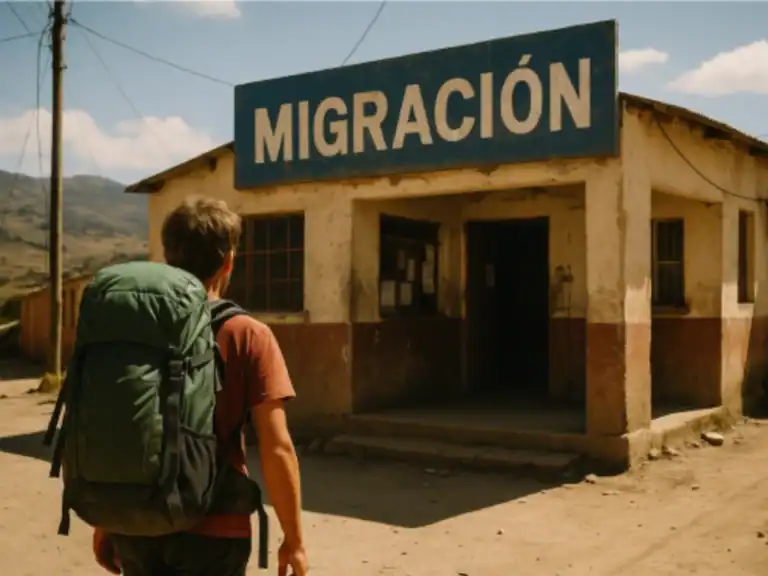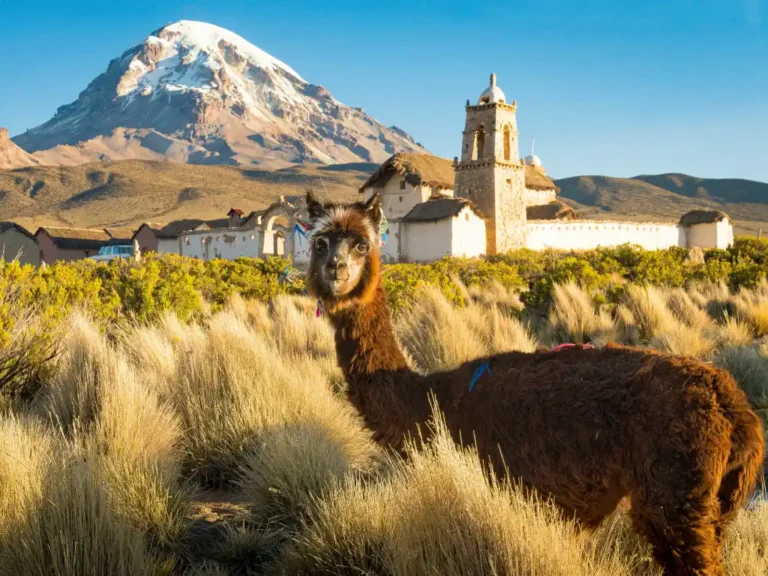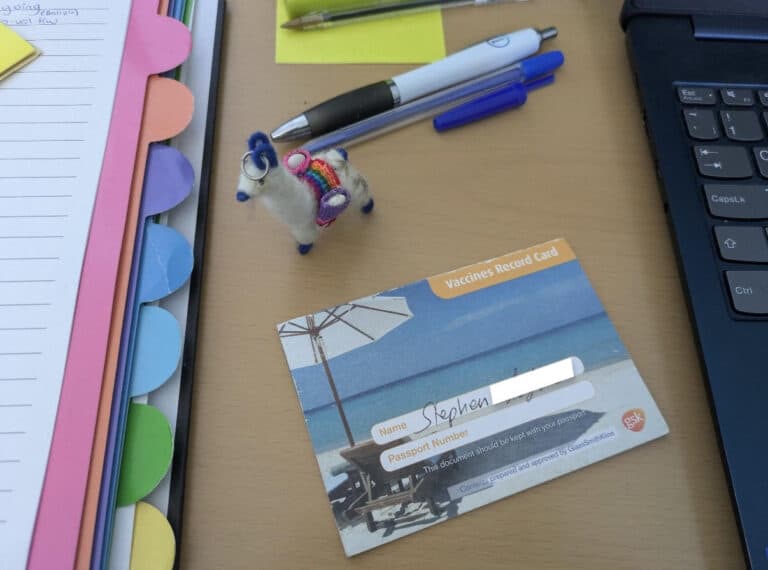A Traveller’s Guide to Exploring Bolivia: The 12 Best Things to Do
Landlocked in the heart of South America, Bolivia shelters a wealth of experiences for those willing to embrace its quirks. From its dizzying altitudes to its colourful traditions, the country serves up a blend of immense landscapes and cultural curiosities that would thrill both wanderers and pub quiz champs alike.
Here’s my expert guide to exploring Bolivia, peppered with some interesting trivia I picked up along the way. I’ve also added in a short FAQ section at the very end to address some questions I’ve been receiving.
I’ve included a handy table below if you’re looking for something specific too!
Righto, let’s get started shall we?
1. Famous Start in this Exploring Bolivia Guide:
Salar de Uyuni or The Salt Flats
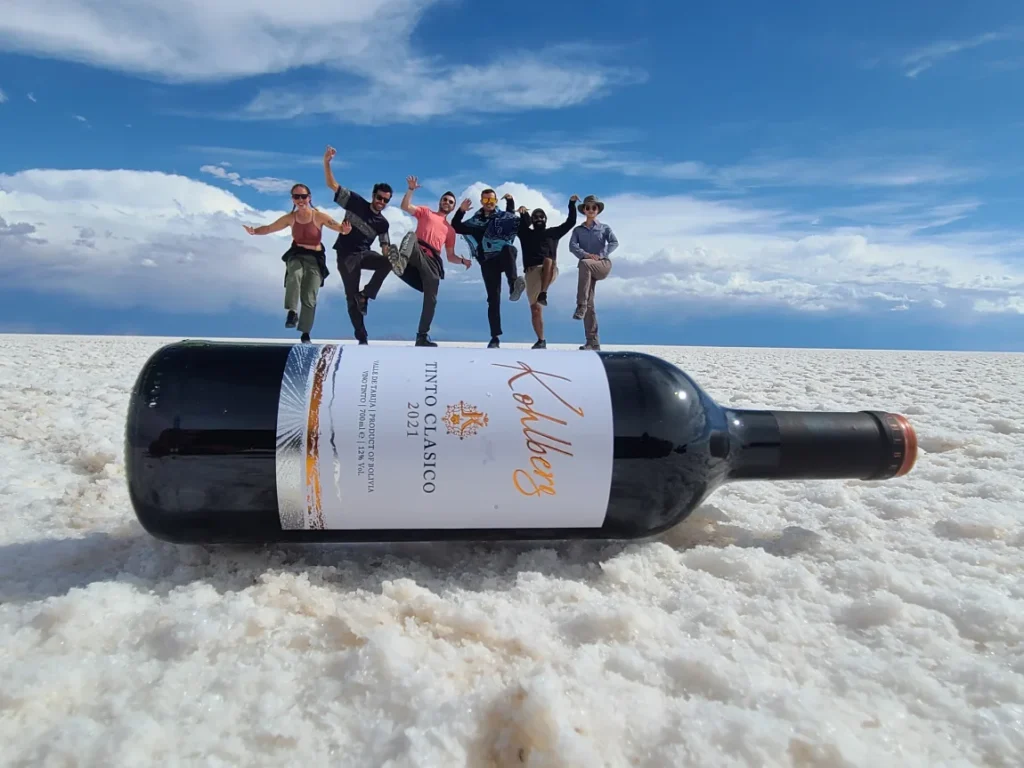
This is by far the most famous aspect of this incredible landlocked country (the only other landlocked country in South America is Paraguay fyi). You’d have to be living under a rock to have not come across pictures of its dazzling mirror effect or immense expanse of white that stretches further than the eye can see.
Welcome to Salar de Uyuni, the world’s largest salt flat which is often described as the place “Where the Sky Meets the Earth”.
Spanning over 10,000 square kilometres, I can’t describe it more concisely than an otherworldly spectacle. Visit during the rainy season, and the water turns the salt desert into a giant mirror, creating mind-bending reflections.
If you want to know the best time to visit the Bolivian salt flats, I have you covered too as well as the best time of the year to visit Bolivia as a whole.
When I went it sadly didn’t rain, but that took nothing away from my time there where I took full advantage of the optical illusions. So choose wisely which side of the flats you want to see (or just go twice, simple!). Our group took a whole bunch of pics in the endless stretch of white, utilising the depth perception, or lack thereof.
If you’re wondering what the climate’s like across Bolivia’s wildly different regions, I put together a full breakdown – might save you from packing five jumpers or getting fried in the Amazon. Also while marvelling at the vastness of Salar de Uyuni, you might wonder about staying connected in such remote areas. For insights into the country’s connectivity options, check out what the internet is like in Bolivia.
Salar de Uyuni is just the start – it’s part of the vast Bolivian Altiplano, a high-altitude plateau filled with surreal landscapes & unexpected pockets of life.
Must-know trivia:
Beneath the dazzling crust lies around 7% of the planet’s known lithium reserves, a crucial ingredient in smartphone batteries. For those following this type of thing in the news, we are also due a shortage soon, they better not even think of touching my salt flats!
Pro tip:
Don’t miss the chance to stay in a hotel made entirely of salt. Yes, you read that right – walls, furniture, the lot! This is in the middle of the salt flats and quite the experience, if you book a tour you will likely have your lunch here like our group did. And try not to lick the walls please, everybody thinks about it!
2. Lake Titicaca: South America’s Largest Lake
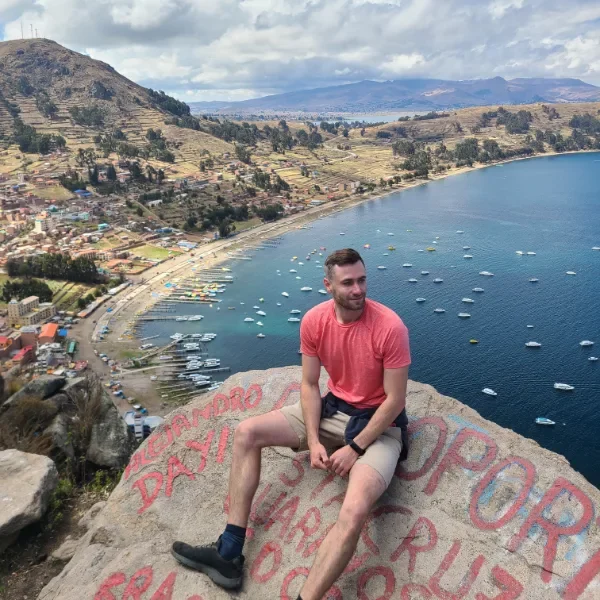
At 3,812 metres above sea level, Lake Titicaca isn’t just any old lake. It’s the world’s highest navigable body of water and steeped in ancient lore. Leaving it out of any exploring Bolivia guide is therefore almost criminal!
Shared by Bolivia and Peru, its shimmering waters are believed to be the cradle of the mighty Inca civilisation. Legend has it that the first Inca king, Manco Cápac, emerged from its depths.
I crossed this lake multiple times during my Peru & Bolivian adventures. One particular pleasant memory involves me marvelling at it’s size and mistaking it for a sea because the other shore was miles off – genuinely couldn’t see land!
What to do:
Visit Isla del Sol, an island said to be the very birthplace of the sun in Incan mythology. The views here are postcard-perfect. The boat trip to the island and beyond is an experience in itself, and there is a fun light hike with a blend of old and new. This is also a site often celebrated during Bolivia’s traditional holidays.
Little-known fact:
The lake has over 40 islands, some still home to indigenous communities who maintain age-old traditions.
3. La Paz: A City Like No Other

At an altitude that’ll leave your head spinning – literally, thanks to the thin air – La Paz defies expectations. As one of the highest capitals in the world, it’s a chaotic yet charming mix of modernity and tradition.
Upon arrival, the sheer amount of colourful cable cars dotting the skyline will be like nothing you’ve seen before. Called “Mi Teleférico”, my group spent the whole first day just travelling around these on an all day ticket and seeing the city from all different angles. Grab your ticket from most of the stations in the city!
Also full of colour, you’ll spot a rainbow-coloured flag flying everywhere – that’s the Wiphala. It’s got deep meaning for Bolivia’s indigenous communities.
I used La Paz as a sort of hub when I visited, chatting to locals and arranging some of the famous tours such as the Death Road or Huayna Potosi (numbers 4 & 5 on this list). There are a bunch of places in the city where you can find tour operators, or simply just ask your hotel/ hostel!
People often fly into here first and ask Q’s related to plans. If you’re planning your own trip & wondering about visas or what to pack, I’ve broken it all down in this practical guide to Bolivia Entry Requirements 2025.
Must-visit spots:
Head to the Witches’ Market (Mercado de las Brujas), where you’ll find everything from love potions to dried llama foetuses used in Aymara rituals. If that’s too weird for you, the city’s high-tech cable car system should be a worthy back up.
Fun fact:
The cable cars aren’t just for tourists; they’re a vital part of La Paz’s public transport network, connecting neighbourhoods perched on the city’s steep hills.
4. Any Guide to Exploring Bolivia Wouldn’t Be Complete Without the Famous Death Road
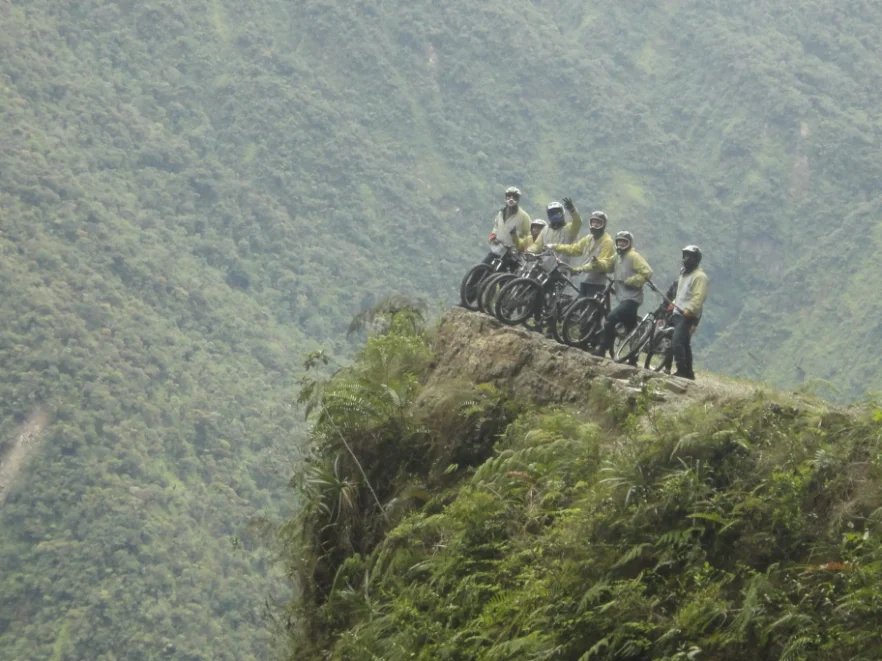
If you’ve ever fancied flirting with danger, Bolivia’s Yungas Road is the place to do it. Known ominously as “Death Road,” this 64-kilometre stretch winds its way from La Paz to the Amazon basin. Sheer cliffs, hairpin bends, and narrow lanes make it a cyclist’s dream -or nightmare. I’ve also written a guide to Death Road’s bike tour with everything you could ever need to know.
Why it’s famous:
Before a safer route was built, this road was a major artery for vehicles, with hundreds of fatalities each year. Now, it’s a bucket-list challenge for adrenaline junkies.
Safety tip:
Stick with a guided bike tour. The views are stunning, but the drops are unforgiving!
5. Huayna Potosí: An Achievable 6,000m Climb
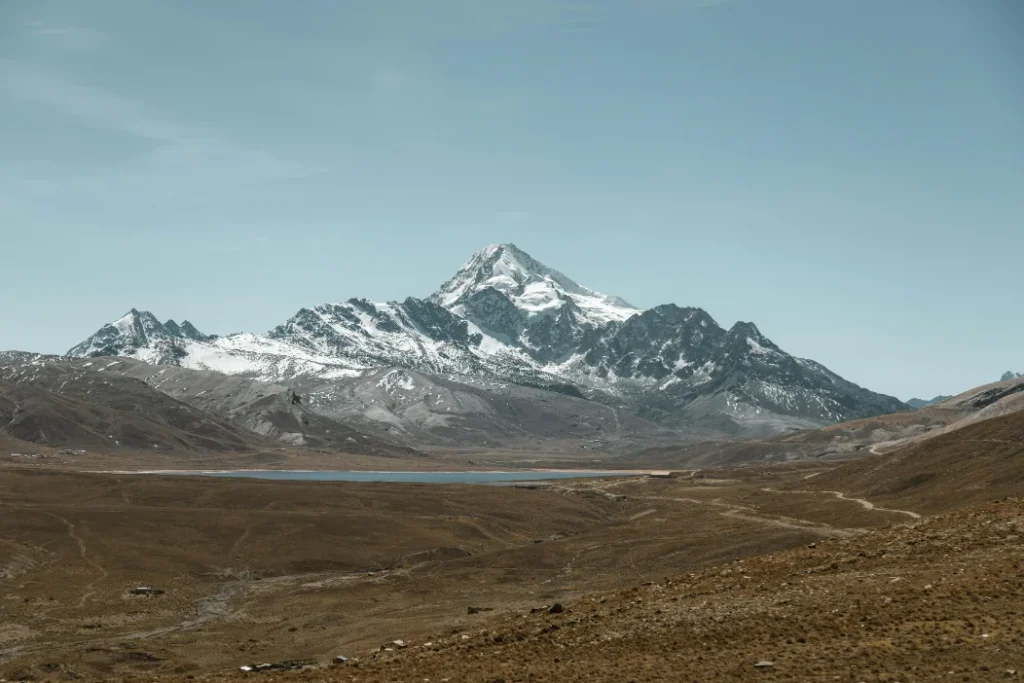
Huayna Potosí is the ultimate adventure for anyone looking to test their limits – and their lung capacity. Just 25km from La Paz, this imposing snow-capped mountain is famous for being one of the easiest 6,000m peaks to summit.
But let’s be honest, “easy” is relative when you’re trudging uphill at dizzying altitudes. My attempt was equal parts breathtaking views and desperate gasping for air, but the sense of accomplishment at the top, watching the sunrise over the Andes, was absolutely worth it. Pack warm for this one!
What to expect:
Most climbers take a two- or three-day trip to the summit, with a night at high camp to acclimatise. The climb itself involves trekking across creaking glaciers and navigating steep slopes with crampons and ice axes – don’t worry, your guide will take good care of you.
Trivia tidbit:
Huayna Potosí translates to “Young Mountain” in Aymara, though at over 6,000m, it’s anything but youthful. It’s also said to have one of the best summit success rates for climbs of its height, though altitude sickness is the real wild card.
6. Santa Cruz de la Sierra: Bolivia’s Tropical Heart

Santa Cruz de la Sierra is a good deal different from the lofty Andes. It’s a sprawling, buzzing city in Bolivia’s lowlands, offering a warm welcome (literally – it’s tropical here) and a completely different vibe to its high-altitude cousins.
My time here was a whirlwind of lively markets, vibrant nightlife and lazy strolls through palm-lined plazas. It’s the kind of place where you can sip a tamarind juice in the shade one minute and be navigating the chaotic roads the next. Another pleasant respite is the Cathedral Basilica of St. Lawrence pictured above.
What to see:
Don’t miss the Plaza 24 de Septiembre, the heart of the city, where you can soak up the local atmosphere and admire the Cathedral of Santa Cruz. For a dose of nature, head to the Jardín Botánico (not translating this one for you haha) or take a short trip to Lomas de Arena, a surreal landscape of golden dunes just outside the city.
Trivia tidbit:
Santa Cruz was founded in 1561 and was originally located about 200km east of where the city is now. The city was moved in the 17th century due to conflicts with indigenous groups – a logistical feat that’s hard to imagine today!
7. Step Back in Time at Tiwanaku
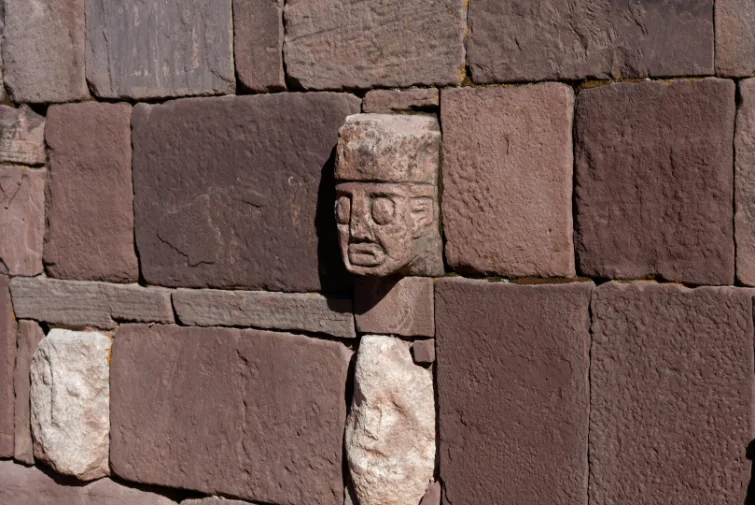
Located near Lake Titicaca, Tiwanaku is an archaeological site that offers a peek into a civilisation that predated the Incas. Walking through its ancient stone structures, you can’t help but marvel at the ingenuity of its creators.
Enjoy walking around the ruins with every turn feeling a pair of ancient eyes following your movements, in the best way there is of course!
Bet you didn’t think this guide to exploring Bolivia was gonna be so cultural huh?
Don’t miss:
The Gate of the Sun, an intricately carved monolith believed to have served as a celestial calendar.
Fun fact:
This UNESCO World Heritage Site dates back to around 400 AD and was once a thriving metropolis. Imagine the stories those stones could tell.
If you’re wondering more about the history and what languages are spoken in Bolivia, this little number could sate that interest!
8. Dance Your Heart Out at Oruro Carnival
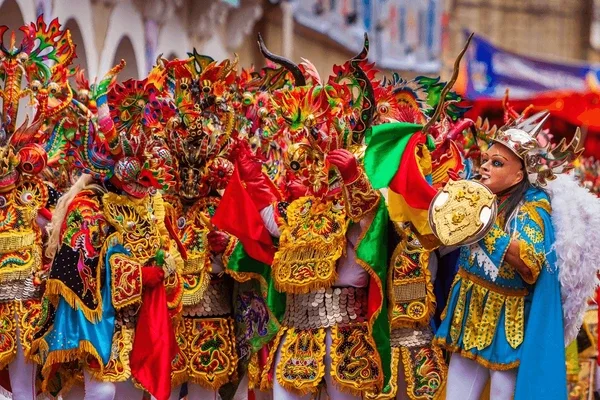
If you time your visit right, the Oruro Carnival is an absolute must-see. This annual pre-Lenten festival (that’s around 2nd – 5th March for you non-Christian folk) features a myriad of fanciful costumes, music, and dance. Recognised by UNESCO, it’s a lively blend of Catholic and indigenous traditions.
Highlight:
The Diablada, or Dance of the Devils, features performers in elaborate masks reenacting the battle between good and evil.
Quick trivia:
The carnival’s roots go back over 2,000 years, originating as a ceremony to honour Pachamama, the Andean earth goddess.
Bolivia’s holidays & traditions are wild, colourful & sometimes beautifully baffling – there’s a deeper dive on all that over here.
9. Sucre: Bolivia’s White Jewel
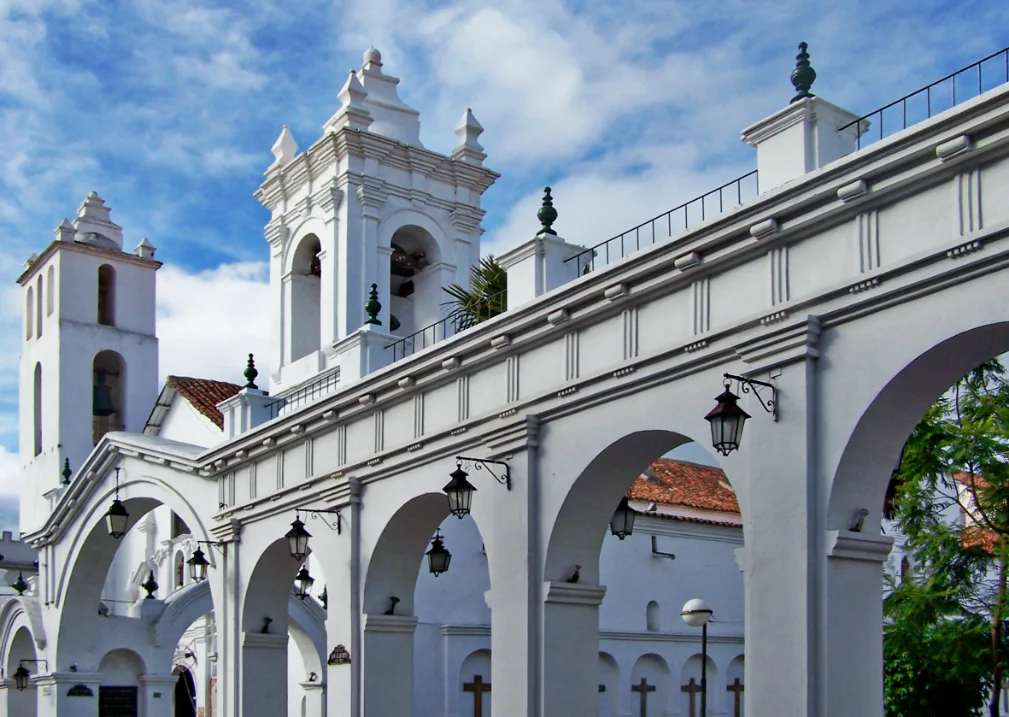
Sucre is Bolivia’s constitutional capital – La Paz is the administrative capital, and naturally the highest one in the world. There’s actually a cool background story behind why Bolivia has two capitals if that’s your kind of vibe.
My impression of Sucre was a city of understated elegance. Known as the “White City” due to its pristine colonial architecture, it’s a great spot to slow down and soak up some history.
This was very much a stop and take a breather city in my exploration of Bolivia. The pace of this city delivered on it’s promise of relaxation, and meant I could enjoy things such as the “Museo del Tesero” (Treasure Museum) all the more.
I met a fair few expats out in Sucre & Santa Cruz – some staying long-term. So if you’re asking “is Bolivia a good place to live?” here’s what I found.
What to see:
Visit Casa de la Libertad, where Bolivia’s Declaration of Independence was signed in 1825. For something completely different, head to Cal Orck’o to see thousands of fossilised dinosaur tracks preserved in a massive limestone wall.
Trivia tidbit:
Sucre was declared a UNESCO World Heritage Site in 1991, thanks to its historical significance and well-preserved buildings. Oh, and if you’re wondering who Bolivia’s actually named after – spoiler: it’s not some obscure Incan deity.
10. Explore the Amazon Rainforest
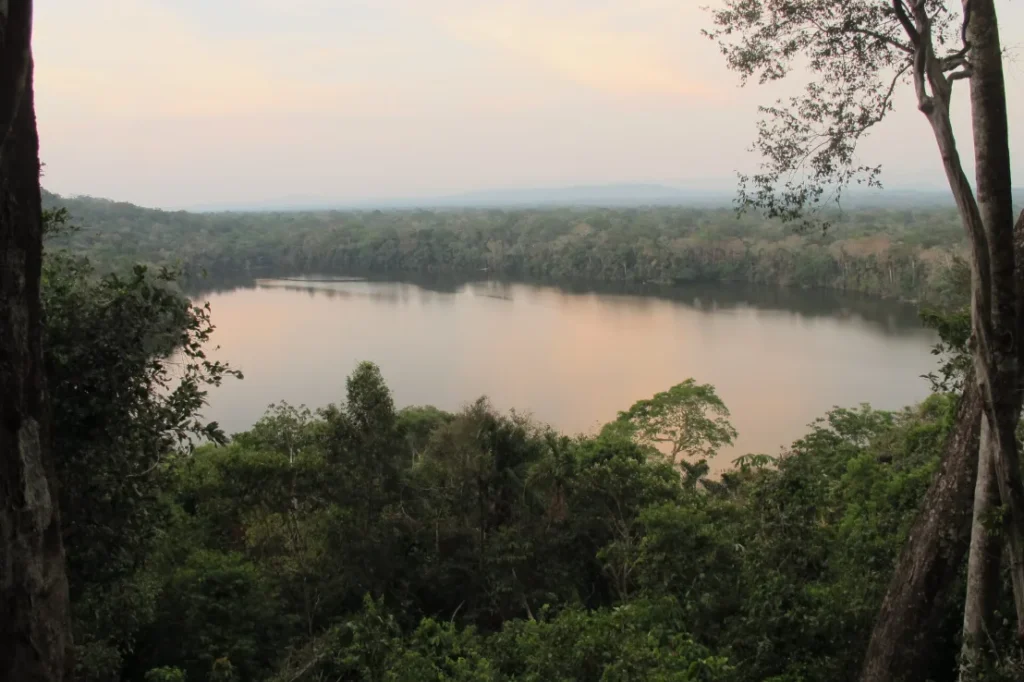
Are you one of those people who thought the Amazon is only in Brazil? Don’t worry, I don’t judge! Bolivia’s slice of this rainforest is just as rich in biodiversity, offering travellers a chance to spot jaguars, pink river dolphins and more.
And no, don’t drink the tap water in Bolivia. Even locals tend to stick with bottled or boiled water. Also, if you’re heading into jungle zones like Madidi, a yellow fever jab’s usually required – I break down Bolivia’s vaccine requirements here.
Top activities:
Take an eco-tour in Madidi National Park or a riverboat trip along the Beni River.
Did you know?
Bolivia is home to over 2,900 animal species, making it one of the most biodiverse countries in the world. I cover more random facts about Bolivia’s diversity too, so keep your eyes peeled – you never know what you may spot.
11. Savour Bolivian Cuisine
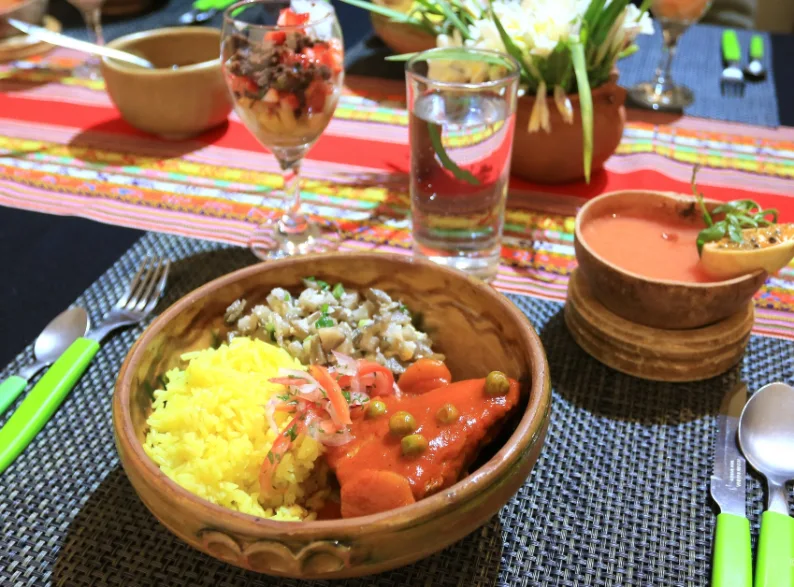
No trip is complete without diving into the local food scene, and Bolivia doesn’t disappoint. Its cuisine reflects a blend of indigenous ingredients and Spanish influences, with hearty flavours to match the rugged landscapes.
Not to fan the flames any more than necessary between the two countries, but there is an ongoing debate about which country makes the best Ceviche. Ecuador even wades into this ferocious battle with it’s own dish.
Reach out for my true thoughts on which Ceviche was my favourite! Not planning on annoying any proud South American residents just yet by sharing my opinions publicly (and that’s without even bringing Salchipapas into the equation haha).
If you want a more complete list of traditional Bolivian Foods then check out this little piece!
Must-try dishes:
Salteñas: These pastry pockets of meat, vegetables, and a slightly sweet, spicy sauce are the ultimate snack.
Pique a lo Macho: A feast of beef, sausages, chips, and peppers. It’s as filling as it sounds.
Food trivia:
Bolivia is home to over 4,000 varieties of potatoes and is the birthplace of the humble peanut.
12. Witness the Spectacle of Cholita Wrestling
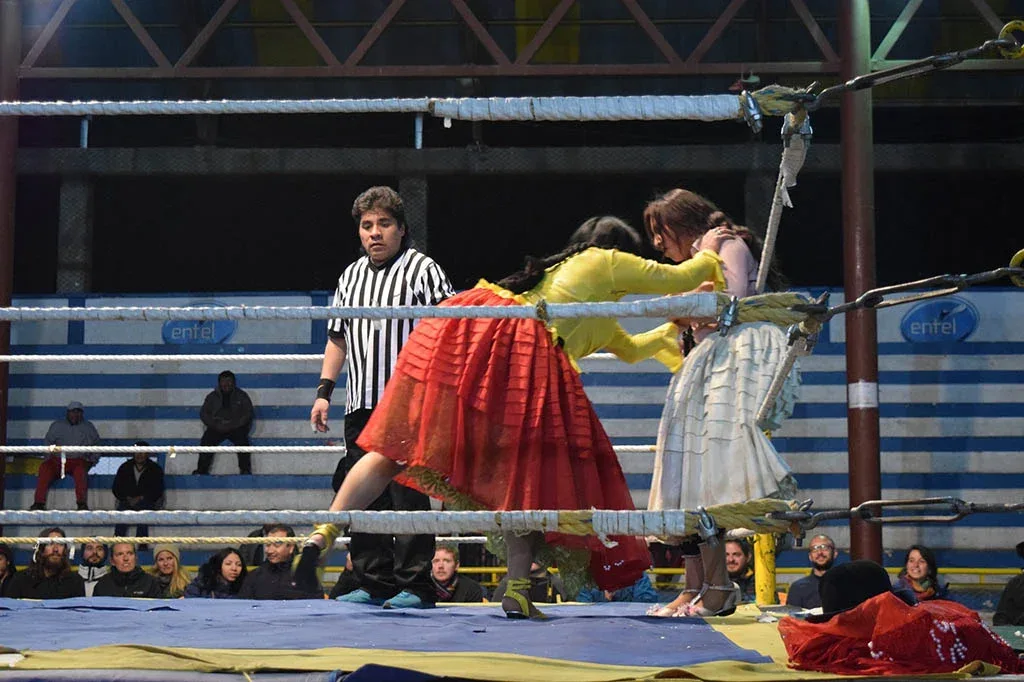
Last but certainly not least on my guide to exploring Bolivia:
Fancy something completely offbeat? Check out Cholita wrestling in El Alto, the city adjacent to La Paz.
These Aymara women, dressed in traditional skirts and bowler hats, perform high-flying wrestling moves in a theatrical display that’s part sport, part entertainment. “Cholita” can be translated as young woman” in this context.
If you’re anything like me and need to know why things are named the way they are this should scratch that itch.
Cultural significance:
Originally created as a way to combat discrimination, the matches have become a symbol of empowerment for indigenous women.
Good to know:
It’s family-friendly and wildly entertaining – think WWE with a Bolivian twist. If safety is a consideration then also make sure to check out whether Bolivia is safe for tourists (spoiler – depends where you go).
Also worried about crime in Bolivia? You’re not alone – I looked into that too.
Why Bolivia Should Be High Up Your Travel List
Bolivia isn’t your typical tourist destination, and that’s exactly what makes it so special. It’s a place where you can walk on salt flats that look like a Salvador Dalí painting, explore ruins older than Machu Picchu, and learn about cultures that predate the Spanish conquest by centuries.
One thing I will say – Bolivia’s easily one of the cheapest countries I’ve travelled in. If you’re backpacking on a budget, this is your dream spot. I’ve got more on that over here.
Whether you’re hiking through the Amazon or munching on a salteña, every experience feels uniquely Bolivian. In my opinion this is exactly why you should visit, it won’t remain this way forever!
If you’re unsure what to pre-book or leave flexible, I’ve written a full guide on Bolivia tours worth booking ahead of time
Have you been to Bolivia or fancy heading there after reading this? Let me know your thoughts in the comments – I’d love to hear about your favourite spots or what you’re most excited to see.
Pack your bags, get ready for an adventure like no other, and as always – Happy Travels.
P.s. don’t forget the FAQ section at the end with some common questions I’ve addressed!
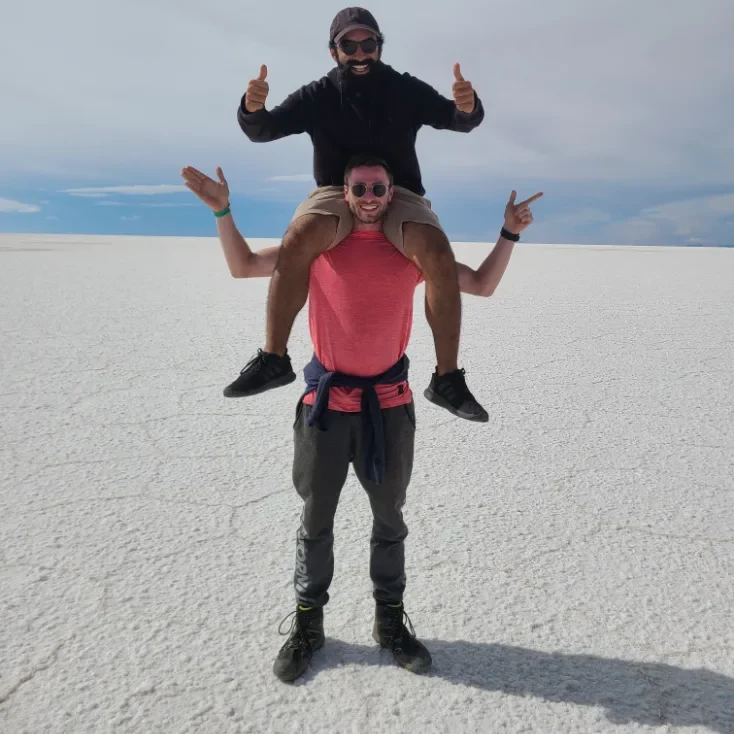
FAQ Section for Common Bolivia Queries
Planning Your Trip to Bolivia? Start Here
Here are some useful bits I’ve written to help you plan like a pro – or at least not forget the visa:
- 🛂 Bolivia Visa Requirements
- 💸 What Things Cost in Bolivia
- 📅 Best Time to Visit
- 🌦 Climate Guide by Region
- 🔐 Is Bolivia Safe for Tourists?
- 🚱 Can You Drink the Tap Water?
- 💉 Bolivia Vaccination Requirements
- 🗣️ Languages Spoken in Bolivia
- 🏛️ Why Bolivia Has Two Capitals
- 🏳️🌈 What the Wiphala Flag Means
What’s the visa situation in Bolivia?
Visa-wise, most travellers can enter Bolivia without too much fuss – but it depends on your passport. US citizens for example have to pay $160. I go over the visa situation in full here, including which nationalities need to prep in advance.
Is Bolivia a poor country?
Depends who you ask. GDP says one thing, but daily life tells another. If you’re curious about Bolivia’s economic reality & how it might affect you as a traveller, I’ve laid it out in plain terms.
Is Bolivia cheap to travel?
Compared to most places – 100% yes. Local meals, hostels & buses are ridiculously good value. For a full breakdown on what your budget might stretch to, here’s what Bolivia actually costs to travel.
When’s the best time to visit Bolivia?
Big question – & totally depends on what you’re there to see. Salt flats in rainy season? Amazon in the dry? My guide on the best time to visit Bolivia breaks it down by activity & season, including when not to go.
What’s the climate like in Bolivia?
Bolivia’s basically a weather buffet – jungle humidity one minute, mountain frost the next. I wrote a climate guide by region so you know what you’re walking into (or packing for).
Is Bolivia safe for tourists?
Mostly, yeah – but it’s not without its sketchy corners. Like anywhere, it helps to know where to go (and where to swerve). I covered safety in detail in this article, including tips from locals & other travellers I met along the way.
Can you drink the tap water in Bolivia?
Short answer: don’t. Long answer: still don’t. Most locals boil or buy, & I wrote a quick piece on why bottled is best in Bolivia just to save you a dodgy stomach.
What languages do they speak in Bolivia?
Spanish is the main one, but Bolivia actually recognises 36 official languages (yep, you read that right). Here’s the full breakdown on languages in Bolivia & where you’ll hear each one.
Why does Bolivia have two capitals?
Sucre is the constitutional capital, La Paz is where the government hangs out. Confusing? Yep. If you want the full story behind Bolivia’s capital quirk, I explain it over here.
What’s the Wiphala flag all about?
It’s not a rainbow Pride flag – though it looks like one at first glance. The Wiphala is full of cultural meaning, & I break it down in this Wiphala Flag meaning article for the curious types.
What’s going on with Bolivia’s economy – & does it affect travellers?
Bit of a heads-up: Bolivia’s economy has been having a rough time lately. Inflation’s climbing, the dollar is in short supply, & the odd petrol queue isn’t out of the question. You’re unlikely to notice much in tourist zones – unless you’re looking to exchange money, in which case, bring USD in cash if you can.
Prices for basics might be creeping up a bit, but compared to most places, Bolivia’s still very budget-friendly. Just don’t be surprised if a few things cost more than your guidebook claims – the economic situation’s been changing fast.
What’s the currency in Bolivia – & will your card actually work?
Bolivia runs on the Boliviano (BOB), which sounds like the name of a friendly landlord but is actually the local currency. In the bigger cities, you can usually pay by card in hotels, some restaurants & the odd souvenir shop – but don’t rely on it too much.
Out in the sticks? It’s a cash-is-king situation. Most small towns, local markets & even some tour operators will expect crisp notes. There are ATMs in cities like La Paz & Sucre, but bring enough cash if you’re heading remote – because nobody wants to be stranded in the jungle trying to trade a Mastercard for bottled water.


